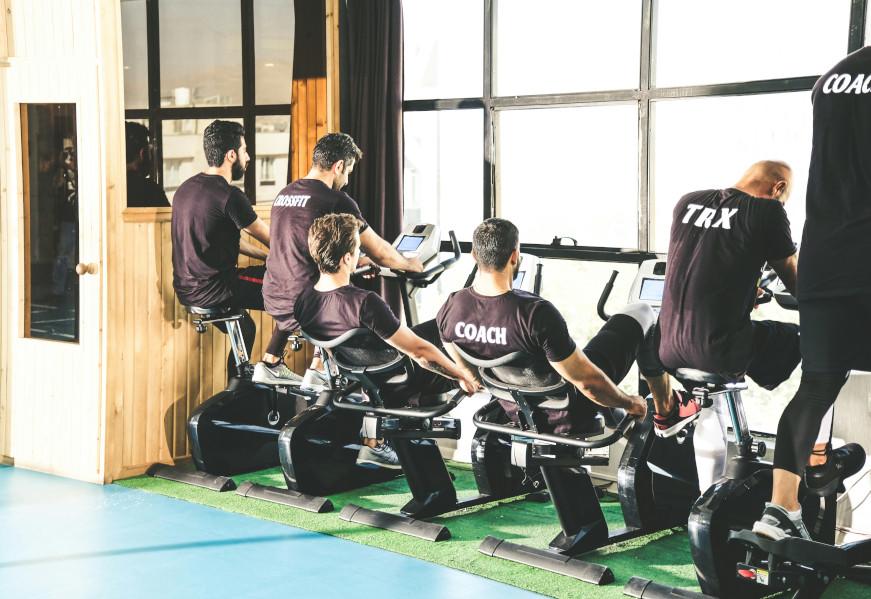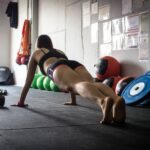Endurance training is a key aspect of fitness that focuses on the ability of muscles to exert force consistently over prolonged periods. This type of training is integral for a variety of sports and activities where sustaining effort is crucial. At the gym, individuals engage in various exercises designed to improve their muscular endurance, which in turn allows them to perform everyday tasks more efficiently and excel in athletic pursuits. Given the dynamic nature of physical activities, creating a balance between strength and endurance provides a comprehensive approach to fitness.
In a gym setting, endurance training typically involves lower weight loads with higher repetition ranges, or sustained aerobic activities. This training approach not only enhances the stamina of the muscles but also contributes to overall cardiovascular health. These exercises are diverse, ranging from weightlifting circuits with minimal rest to static exercises aimed at time-under-tension, which can boost endurance capabilities. Farmers walks, high-rep deadlifts, and chin-ups with static holds are among the exercises that effectively target muscular endurance. Furthermore, long, slow distance training on cardio equipment supports the development of cardiovascular endurance, laying a strong foundation for more intense workouts.
Adopting a structured fitness program that includes endurance training is pivotal for anyone aiming to improve their longevity in sports or day-to-day functionality. This could involve varying the ratio of strength to endurance training depending on individual goals, with combinations like a 2:1 or 3:1 strength-to-endurance ratio being common among those who prioritize strength but want to maintain endurance. Tailoring the endurance training components to fit one’s personal fitness level and objectives ensures sustainable progress and maximizes the benefits of time spent in the gym.
Understanding Endurance Training
Endurance training at the gym targets the improvement of the body’s ability to sustain physical activity for prolonged periods. It involves systematic exercises that enhance aerobic fitness, focusing on the body’s efficiency in energy production, oxygen utilization, and muscle fiber recruitment.
Types of Muscle Fibers
Muscles are composed of different types of fibers, each with distinct characteristics.
- Type I fibers, also known as slow-twitch fibers, are crucial for endurance. They are fatigue-resistant, rely on aerobic energy systems, and contain a high number of mitochondria, the cell’s powerhouses.
- Type II fibers are fast-twitch muscles that generate more power and strength but fatigue faster and are primarily utilized in anaerobic activities.
Energy Systems in Endurance
Endurance activities depend on various energy systems to supply the necessary adenosine triphosphate (ATP) for muscle contractions. The body resorts to different pathways to replenish ATP:
- Aerobic Glycolysis: Oxygen-dependent breakdown of carbohydrates, crucial for long-duration, moderate-intensity activities.
- Anaerobic Glycolysis: Occurs without oxygen, rapidly supplying energy, but results in the accumulation of lactate.
- Phosphocreatine System: Provides immediate bursts of energy, used for short, high-intensity efforts.
For endurance, the aerobic system is pivotal as it can sustain energy production for extended periods.
Role of Aerobic Exercise
Aerobic exercise enhances the body’s capacity to deliver and utilize oxygen to the muscles, thereby increasing aerobic endurance. Consistent training results in:
- Improved efficiency in oxygen transport and consumption.
- Increased mitochondrial density in muscle cells, leading to enhanced ATP production.
Activities such as running, cycling, and swimming are typical exercises that develop aerobic fitness by challenging the cardiovascular system and muscles to work over a sustained period.
Developing a Training Program
When designing an endurance training program, athletes should focus on setting clear goals, managing the balance between training volume and intensity, and incorporating adequate rest and recovery to allow adaptations to occur and prevent injury.
Setting Endurance Goals
An athlete must set specific, measurable, achievable, relevant, and time-bound (SMART) goals to steer the direction of their training program. These goals could range from improving their time in a marathon or increasing the distance they can cycle. It’s essential to outline both short-term and long-term objectives to maintain motivation and measure progress.
Example of goal-setting for endurance training:
- Short-Term Goal: Increase weekly running distance from 15 miles to 20 miles over the next month.
- Long-Term Goal: Complete a marathon in under four hours within the next year.
Balancing Volume and Intensity
The core of an endurance program lies in optimizing the volume (total distance or duration of workouts) and intensity (level of effort) of training. A gradual increase in workout volume is critical to building endurance without overtraining. However, intensity must not be overlooked; including high-intensity interval training (HIIT) sessions can enhance cardiovascular efficiency and increase stamina.
Adjusting Volume and Intensity:
- Week 1: Run 15 miles total. Include one HIIT session.
- Week 2: Run 18 miles total. Include one HIIT session and one longer, moderate-intensity run.
- Week 3: Run 20 miles total with two moderate-intensity runs and one HIIT session.
Importance of Rest and Recovery
Rest periods are as important as the training itself because they allow the body to recover and adapt to the training stimulus. A failure to incorporate adequate recovery can lead to diminished performance and a higher risk of injury. Rest days should be scheduled strategically around more intense or longer training days to facilitate optimal performance improvement.
Rest and Recovery Strategy:
- After High-Intensity Sessions: Minimum of one day of rest or low-intensity training.
- After Long Endurance Sessions: Incorporate light activities such as yoga or swimming on rest days to promote active recovery but limit impact stress.
Core Endurance Exercises
Core endurance exercises are essential for enhancing the muscular endurance of the body’s midsection, which is crucial for maintaining stability and posture. These exercises primarily target the slow-twitch fibers designed for prolonged activity, helping to prevent injury while performing endurance activities.
Plank Variations
Standard Plank: Individuals should start in a prone position, elevating their body onto their forearms and toes, keeping a straight line from shoulders to heels. One should aim to hold this position, engaging the core muscles, for incremental durations to build endurance.
- Side Plank: This entails shifting from a standard plank position onto one side, stacking one foot on top of the other, and lifting the opposite arm towards the ceiling. This exercise focuses on the obliques and lateral stability.
- Walking Plank: Transitioning from a forearm plank to a high plank position repetitively not only works the core but also increases heart rate, integrating a cardio component.
Core Strengthening Routines
- Bicycle Crunches: Lying on the back with hands behind the head, one alternately brings the knee to the opposite elbow creating a cycling motion. This targets the rectus abdominis and the obliques.Set/Reps3 sets of 15-20 reps
- Reverse Crunch: To perform, one lies flat on their back and lifts their legs towards the ceiling, then pulls the hips off the ground using the lower abdominals.Set/Reps2 sets of 12-15 reps
Incorporating these exercises into a twice-weekly session can significantly improve one’s core endurance, aiding overall athletic performance and daily functional movements.
Lower Body Training
Lower body endurance training is crucial for developing the legs, one of the most significant muscle groups for activities such as running and cycling. This training involves specific exercises like squats and lunges, and drills that improve performance in endurance sports.
Squat Techniques
Squats are foundational for building leg strength and endurance. Here are two key squat variations:
- Back Squat: Targets the quadriceps, hamstrings, and glutes.
- Form: Stand with feet shoulder-width apart, barbell on traps, bend knees and hips to lower down as if sitting in a chair, keep chest up, and push through heels to return to standing.
- Bulgarian Split Squat: This single-leg exercise increases focus on each leg individually.
- Form: With one foot elevated behind on a bench, the other leg performs a squat, bending the knee to a 90-degree angle, then push back up to the starting position.
Running and Cycling Drills
Running and cycling drills enhance leg endurance and cardiorespiratory fitness:
- Intervals for Running: Alternate between high-intensity sprints and recovery jogs.
- Structure:
- 1 minute sprint
- 2 minutes jog recovery
- Repeat for 20-30 minutes
- Structure:
- Hill Repeats for Cycling: Cycling up a hill to build leg muscles specific to cycling endurance.
- Method:
- Find a hill with a challenging but manageable incline.
- Cycle up the hill at a steady, challenging pace, then coast down for recovery.
- Repeat the hill climb multiple times.
- Method:
Upper Body and Core Stability
In the realm of endurance training at the gym, focusing on upper body and core stability is crucial for creating a balanced and robust physique. This section delves into push-ups and pull-ups as foundational exercises for the upper body, and highlights dumbbell and barbell exercises for advancing strength and endurance.
Push-Ups and Pull-Ups
Push-ups engage multiple muscle groups across the upper body and core, including the chest, shoulders, triceps, and the spine’s stabilizing muscles. They are versatile and can be adapted to suit any fitness level, providing a comprehensive workout for the arms and enhancing overall muscular endurance.
- Muscles targeted: Chest, triceps, deltoids, core
- Benefits: Strengthens and stabilizes, accessible without equipment
Pull-ups are another cornerstone for upper body strength, primarily working the lats, biceps, shoulders, and core muscles. To effectively execute a pull-up, one must pull their entire body weight against gravity, which requires and builds significant muscular endurance and grip strength.
- Muscles targeted: Lats, biceps, deltoids, core
- Modifications: Assisted pull-ups for beginners, weighted for advanced
Dumbbell and Barbell Exercises
Incorporating dumbbells into an endurance-focused workout routine allows for a wide range of exercises that target both large and small muscle groups. Movements like the dumbbell bench press and hammer curls are efficient in building strength in the arms and chest. They also require coordination and core engagement for stability throughout each lift.
- Dumbbell bench press: Targets chest, triceps, and shoulders; promotes symmetrical development
- Hammer curl: Isolates biceps; also engages forearms and core for stability
Barbell exercises, such as the traditional bench press, are fundamental to developing upper body power and endurance. By utilizing a barbell, individuals can lift heavier weights, which leads to greater muscular endurance over time. The bench press, focusing on the chest, shoulders, and arms, also requires the spine and core to remain stable, thus encouraging a rigid and strong central body framework.
- Barbell bench press: Pivotal for chest, shoulders, triceps; engages core for a stable lift
Circuit Training and High-Intensity Workouts
Incorporating circuit training and high-intensity interval training (HIIT) at the gym provides a dynamic approach to elevate power, conditioning, and calorie burn. These methods focus on increased intensity to enhance fat loss and improve cardiovascular endurance.
Designing Effective Circuits
Effective circuit training involves a series of exercises executed with minimal rest between each one. A typical structure might look like this:
- Duration: 30-90 seconds per exercise
- Intensity Level: Moderate to high
- Repetitions: 10-15 per exercise or timed intervals
- Rest: Short; typically around 15-30 seconds between exercises
Example Circuit:
- Cardiovascular Exercise (e.g., jumping jacks, treadmill running)
- Upper Body Strength (e.g., push-ups, dumbbell press)
- Lower Body Strength (e.g., lunges, squats)
- Core Exercise (e.g., planks, Russian twists)
By rotating through different muscle groups, participants can maintain a higher level of intensity without muscle fatigue.
Benefits of High-Intensity Interval Training
HIIT encompasses bouts of very high-intensity efforts followed by varied rest intervals:
- High Intensity: Activities such as sprinting or biking at maximum effort
- Interval Duration: Typically ranges from 20 seconds to several minutes
- Recovery: Active rest with low-intensity exercise like walking
The key benefits of HIIT include:
- Caloric Burn: Enhanced caloric expenditure during and after exercise
- Fat Loss: More effective in fat reduction compared to steady-state cardio
- Time Efficiency: Shorter workouts due to increased effort
This approach is well-suited for individuals looking to gain significant health and fitness results in a limited timeframe.
Nutrition and Supplements for Endurance
Endurance athletes require a carefully calibrated diet rich in carbohydrates and protein to fuel their performance and facilitate recovery. Strategic intake of these macronutrients is crucial for sustaining energy levels and rebuilding muscular strength.
Optimizing Carbohydrate Intake
Carbohydrates are the primary source of energy for endurance athletes. They should aim for:
- Pre-training: 6-12 grams of carbohydrates per kilogram of body weight in the 24 hours prior to the event.
- During training: Focus on maintaining carbohydrate availability to sustain performance.
| Intensity | Carbohydrates per hour |
|---|---|
| Moderate | 30-60 grams |
| High | Up to 90 grams |
Electrolyte-replenishing products that offer a mix of carbohydrates and electrolytes can be beneficial during extended sessions.
Protein and Recovery
Protein is vital for the repair and recovery of muscle tissue post-exercise. Endurance athletes typically require:
- Daily intake: 1.2-2.0 grams of protein per kilogram of body weight, with lower end suits endurance-focused routines.
Importantly, athletes should distribute protein intake throughout the day, post-workout, and especially after intense training to facilitate muscle repair. Lean sources of protein such as chicken, fish, and plant-based options are ideal.
Preventing and Managing Injuries
Proper management and prevention of injuries are crucial for sustaining the benefits of endurance training over time. Endurance athletes often push their bodies to limits, making the risk of injury a significant concern that needs strategic approaches to mitigate.
Common Endurance Training Injuries
Endurance training typically puts repetitive stress on muscles, bones, and joints, which can lead to specific injuries. These include stress fractures, muscle strains, shin splints, and tendonitis. Stress fractures are tiny cracks in a bone, often occurring in the feet or legs due to overuse. Muscle strains, or pulled muscles, are the result of fibers within the muscle or tendon stretching too far and tearing. Shin splints manifest as pain along the inside edge of the shinbone, common among runners. Tendonitis is the inflammation of tendons and is often seen in the Achilles tendon of endurance athletes.
Injury Prevention Strategies
Injury prevention is achieved through a combination of strategies. These range from proper warm-up routines to strength and flexibility training, as well as paying attention to form and technique.
- Warm-Up: Athletes should engage in a dynamic warm-up routine to prepare the body for the demands of endurance training.
- Strength Training: Integrating exercises that build muscular strength, particularly in the core and the muscles used in the endurance activity, can protect against injury by ensuring that the body can handle extended periods of physical activity.
- Flexibility Training: Maintaining flexibility helps to reduce the risk of muscle strains and joint issues. Regular stretching, yoga, or Pilates can be beneficial.
- Technique: Proper form, especially during repetitive movements, is essential for reducing strain on the body and preventing injury.
- Recovery: Adequate rest and recovery time between sessions allow for the repair of tissues, which is vital for preventing overuse injuries.
By incorporating these strategies into their training, athletes can build muscular endurance and strength, crucial for their performance and daily tasks, while minimizing the risk of injuries that can hinder their progress.








